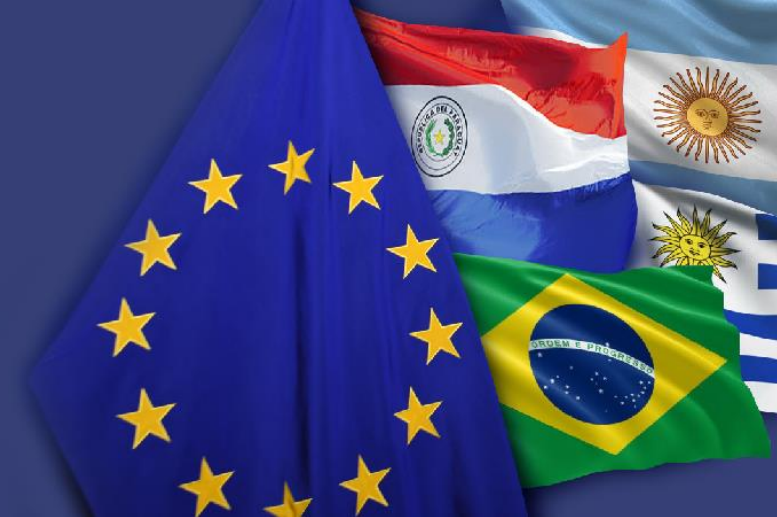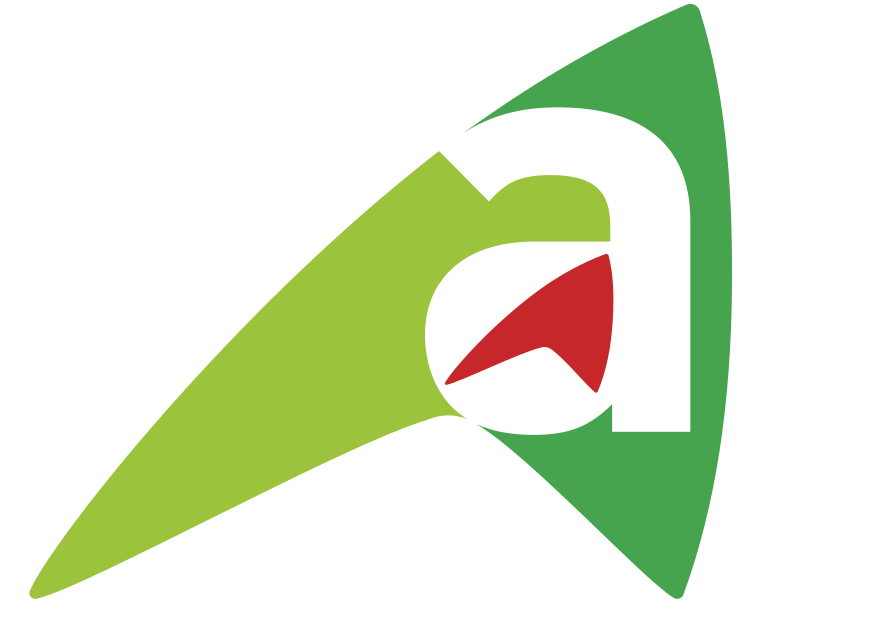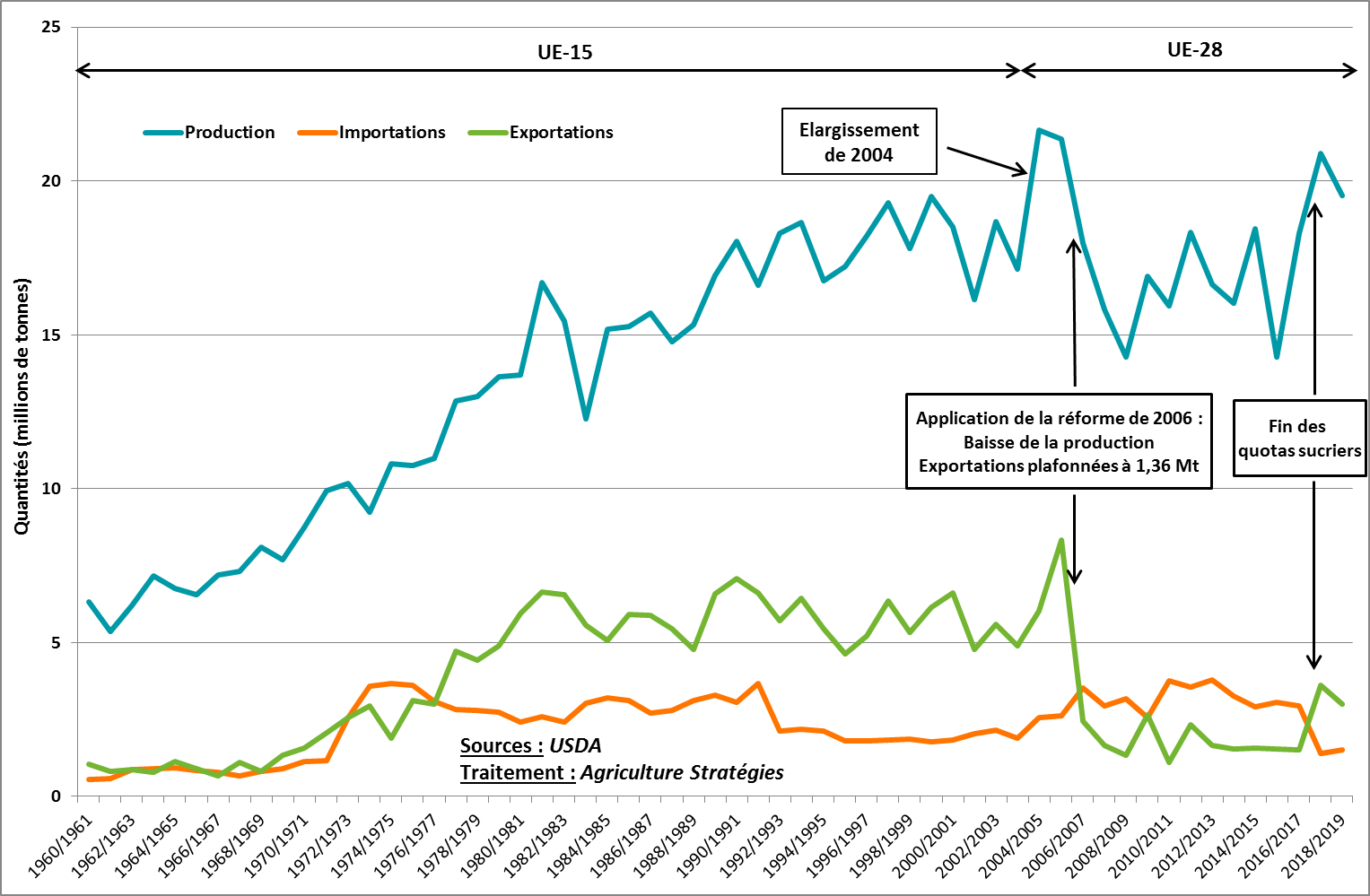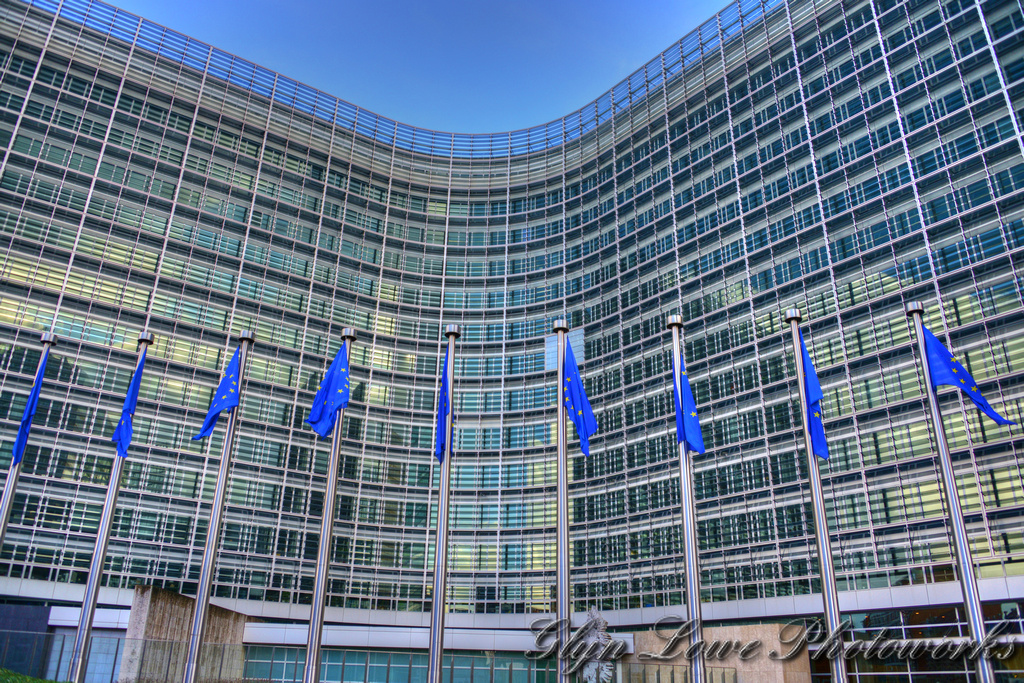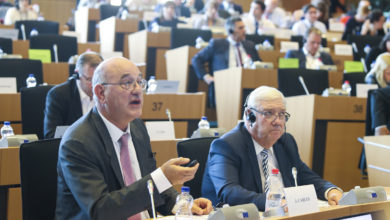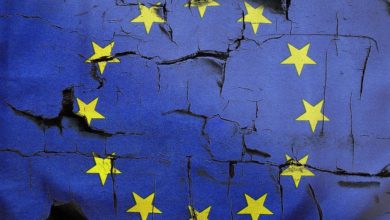
Download the PDF
The year 2016 has seen a significant innovation in the Common Agricultural Policy. To tackle the milk crisis and the build-up of public stocks, the Commission used the prerogatives available in the latest reform to implement an aid scheme to reduce production. Endowed with €150 million budget, the measure has helped to reduce production in the last quarter of 2016, and one can already see its impact on prices. Aside from Italy and Poland, most producing nations clearly joined in, with Belgium and Ireland taking the lead. While President Juncker had indicated that the post-2020 CAP keywords would be “simplification” and “modernization”, this new type of program, which directly deals with the causes of crises on a voluntary and incentive-based system and with an extensive use of administrative dematerialization, will undoubtedly set an important precedent for the next negotiation.
The Russian embargo, China’s declining imports of dairy products and the end of milk quotas have caused an overproduction crisis in the dairy sector since the end of 2014. Yet, we note a clear improvement of milk powder and butter prices since last summer, which is starting to result in increased prices paid to producers. The reasons for this recovery include a new measure to manage the European production whose principle was announced as early as March 2016 and implemented the following September––the support to reduce milk production. Consequently, European dairy farmers could, on a voluntary basis, commit to cut down production in exchange for a €0.14 subsidy for each liter not produced. The first part of this article will examine the implementation and the impact of this new European plan to manage crises. After reviewing its origins, the first findings concerning a possible institutionalization of the new measure will be covered in the second part of this article.
€150 million to lower production by 2.8%
While the objective to lower production was known since March, the detailed provisions of the measure to contain this new milk crisis were only disclosed in July1. The €500 million pledge was split between two funding envelopes: €150 million for member states to offer farmers the possibility to cut down production over a three-month period against a €0.14/liter subsidy; The €350 million balance, to be distributed to member states on a pro rata basis of their production, gave them the possibility to combine additional measures to increase aid to production reduction, or to support extensive production systems, small-scale farmers and cooperative initiatives, as well as to assist the meat sector. As result, France opted to raise to €0.24/liter the amount of the subsidy to cut down production up to a limit of 5% of output, and to grant €1,000 to struggling farmers and €150 for each lightweight young bull2.
€150 million at €0.14/liter equals to a volume of 1.07 billion liters. Compared to the production of 154 billion liters collected in 2015/2016, the measure’s goal was thus to reduce by 2.8% the milk production in a trimester. Another feature of the measure is the fact that it is not compulsory but voluntary. Farmers have to apply for it through a dematerialized procedure within the limit of 50% of their past production. The measure therefore allowed to finance both production shutdowns and temporary reductions since the sole condition was to be a dairy farmer before applying for the aid. Considering that reduction applications covered over 18,000 liters––the equivalent of 7% of the average production of a European dairy farm––one can presume that the measure was mostly used for a temporary reduction of activity.
Initially scheduled to be implemented in four stages between September and December, the measure proved to be hugely successful since 98.8% of subsidies had been applied for as early as September 21. Farmers who had not made a decision during the first round only had access to a minimal share of the system on a pro rata basis, for volumes that were on average ten times smaller than those during the first round. Understandably, the other two rounds were cancelled.
The measure was voluntary for farmers as well as for member states that could opt to not open up the program on their territory. Going against the concern that the measure would be used by only a few member states, 27 of the 28 EU member states did activate the procedure. As a small cow’s milk producer and dairy product importer, Greece is the only country to have acted otherwise.
Belgium and Ireland take the lead
The examination of the spread of aid applications per country also provides interesting information3. The graph below (fig. #1) represents each country according to three parameters: the size of the circle showing the flag is proportional to the country’s total production, the x-axis (to the left) represents the volume committed to reduction, and the y-axis (at the bottom) indicates production increases between 2012 and 2015. It shows a strong correlation between commitments to reduce production in 2016 and the production increases in the previous years. Germany, the leading European producer––32.4 billion liters––with the highest production growth in total value between 2012 and 2015, is also the member state that leads in the use of the reduction measure. Broadly speaking, Germany, France, the United Kingdom, the Netherlands, Ireland and Poland are the major beneficiaries of the measure among key European producing countries.
milk production increase 2015-2012

Figure #1: Volumes involved to production reduction in 2016 and production variation between 2012 and 2015
Yet, the disparity of profiles of the various producing nations demands further examination. To achieve this, we designed an indicator of participation in the program that is based on two variables: the share of production committed to reduction and the share of committed dairy farmers. For each variable, the maximal value got the note of 100, and the ranking is made according to the total of scores of each of the two variables. The chart below (fig. #2) shows the leading 12 countries for the two variables and the indicator of participation that summarizes the total of the two dimensions.

Figure #2: Indicator of participation in the aid scheme to reduce milk production
Hungary and Ireland committed to reduce the equivalent of 4.4% of their 2015 production. As far as the second variable is concerned, we also find Ireland in third position this time with 32% of committed farmers, ahead of France (32.3%) and above all Belgium (45.5%). In the end, Belgium leads in the summary indicator thanks to its divergence on the share of committed farmers. Ireland and Portugal also gained a place on the podium. Following in the ranking are France (32.2% of farmers and only 2.9% of volumes committed), and Germany (18.4% of farmers but more volumes committed with 3.6%). Like most Eastern member states, Hungary registered a weak mobilization of farmers (4.2%, 18th position) but ranks in sixth position in spite of its first place in volumes committed. Close to one out of four Dutch farmers was involved (4th position), but with small volumes (2.3% of committed volumes, 18th position). Lastly, the British ranked in 9th position with a balanced profile (10th place in volumes and 9th in participants).
Among key producing nations, we note the case of Italy and its complex history with quite promising markets and quotas, which trails in 23rd position (0.9% of committed volumes and 4.5% participation), and that of Poland in 22nd place (2% of committed volumes and 4.1% participation). Excluding these two nations, all key producing nations represent 75% of European production and rank among the first nine places in the indicator of participation.
The figure #3 below shows the negative correlation (the correlation remains weak) between the ranking in the participation indicator and the production growth between 2012 and 2015. The nations that got the most involved in the production reduction measure are also the nations that had the most production increase in the previous years.

Figure #3: Connection between the indicator of participation into the aid to reduce production in 2016 and production growth between 2012 and 2015
Effectiveness of the measure
Assessing the effectiveness of the measure to rebalance markets is not an easy task considering the many factors that influence price setting for a market where a small gap between production and consumption implies strong price variations. In addition, the psychology of operators comes into play in economics: The announcement of a measure may already produce the desired results as it drives economic actors to alter their assessment and expectations of the future. This is especially the case regarding products that can be stockpiled like butter and milk powder for which price expectations play directly on decisions to “keep” stocks or not; the specialists4 in commodity finance therefore call “convenience yield” the advantage of keeping stocks when a price hike is anticipated and vice versa. As shown in the graph below, milk prices (in blue) and processed dairy product prices (in red) are now significantly rebounding since their lowest rates in the spring.

Figure #4: Development of milk and dairy product prices
Source: EU Milk Market Observatory
The European milk production has started to decline since June. In addition to the announcement of the production reduction measure, the low prices recorded since the end of 2014 have also began to lead to lower production; the September milk collection regained its 2014 level, while it was reaching a historical peak in May. The supply adjustment time may seem long, but let’s not forget that the milk production price structure is marked by very high fixed costs, which implies a low productivity reaction to low prices, as farmers remain individually reasonable in maintaining production levels once variable costs are covered and accepting a low compensation for their work and their mobilized capital.
Large-scale reliance on public stockpiling
The return of high prices can also be explained by the large-scale reliance to public stockpiling for milk powder. Opened up since the summer of 2015 due to prices below the intervention price of €1,698/ton, stockpiling ceilings had to be increased to address market congestion. Last March, Commissioner Hogan thus announced, as an exceptional measure, that the stockpiling ceiling was doubled to 218,000 tons5 from 109,000 tons. In the end, milk powder stocks reached 355,000 tons in September6, or the equivalent of about 4 billion liters (2.6% of European production). At €1,698/ton, about €600 million had to be allocated for that stockpiling operation between July 2015 and September 2016.
As far as higher prices for processed milk products are concerned, it is evidently impossible to measure the respective consequences of public stockpiling and the production reduction aid system. In any case, the combination of the two measures could indeed be improved, and perhaps might it have been better to implement the reduction aid sooner? It would have limited the build-up of public stocks that always cause prices to fall, which is not easy to undo without preventing higher prices7. It is indeed always easier to say this in hindsight, but one must bear in mind that the production reduction aid measure was developed in an emergency situation and based on narrow legal footings, which proves the lack of preparation to face a crisis that was expected by many experts after the quota elimination and that, once driven into a corner, the Commission is capable to deliver strong and bold proposals that break from the usual dogmas.
The origins of a ground-breaking measure for the CAP
Although the September 2015 statements made by Commissioner Hogan and the European ministers of agriculture are at no point referring to such policy, we had to wait for the announcements of the second set of measures in March 2016 for the Commission to put forward Articles 219 and 222 of the Single CMO regulation. In fact, the second article provides that in time of serious market imbalances––incidentally not specified––inter-professional and producer organizations (including cooperative firms in the Commission’s view) may grant exemptions from competition laws to implement various measures including “production planning” during a limited period. The article, whose potential application is quite large, does not provide any precision on how it could be applied since only the principle is established.
The April 2016 implementing regulation8 is not going much further and, at this stage, no specific aid to voluntary production reduction was outlined. We really had to wait for July so that a specific budget for production reduction is announced, and that the measure is intended directly to farmers and not to inter-professional and producers’ organizations9. Such reversal proves again that in times of crisis, everything is possible! Must it be interpreted as the fear of sowing the seeds of a monopolistic management of the sector as a result of the lack of commitment from public authorities in the name of free competition? Or more simply, must we see an awareness of the actual level of organization of the sector in which, with the exception of four or five countries, farmer cooperatives are not sufficiently developed to rapidly implement this type of measure?
More concretely, we need to put this reversal in perspective with the events that occurred prior to the drafting of Article 222 and others. One must remember that the previous commissioner, Dacian Ciolos, supported the proposal introduced by MEP Michel Dantin as early as 2011, which explicitly aimed at the implementation of an incentive support system to reduce production in case of crisis. The proposal even went further by advocating a tax for those that on the contrary would increase production in such a situation. The “Dantin Amendment” that was discussed in the negotiation on the Single CMO regulation in June 2012 includes the following text: “In the event of a severe imbalance in the market for milk and milk products, the Commission may decide to grant aid to milk producers who voluntarily cut their production by at least 5% compared with the same period in the previous year, for a period of at least three months, which may be extended. When granting such aid, the Commission shall also impose a levy on milk producers who increase their production during the same period and in the same proportion.”10
This political impetus was not enough to establish a completed scheme to prepare for the post-quota era, but it nevertheless allowed to generate a series of articles that, four years later, drove the Commission and member states into a corner. The Commissioner himself tried to go along these lines by organizing the September 2013 “Milk Conference” that was to lead to the “freeze scheme”. But has he recently admitted “There is not regulation instrument when there is no political will. After the 2008-2009 milk crisis when I was the European Commissioner for Agriculture, I submitted proposals but the states did not agree.”11
Among those spearheading the aid scheme to reduce milk production, we must mention the European agricultural union––the European Milk Board (EMB)––which as early as 2009 presented increasingly detailed proposals for a dynamic control of production. An impact study on the “program to empower markets” was presented this past June12.
Lastly, it seems that the thinking on this issue was partly influenced by the discussions in the United States where, as early as 2006, some projects for instruments of dynamic control to better adapt supply to demand were taking place before the last two Farm Bills13. The Dairy Market Stabilization Program (DMSP), drafted under the aegis of the economist Andrew Novakovic, was ultimately not retained in the latest agricultural legislation, there also for a lack of favorable price conditions and of a competitive system of prices paid to producers14.
A precedent for the post-2020 CAP?
The support scheme to reduce milk production is thus based on that relationship. The success of the new program in terms of participation and impact on prices might suggest to milk farmers an exit from a future crisis, even if the setting of prices paid to producers and the spread of prices between processed product prices and milk prices continue to be crucial issues for the sector. This new type of program will undoubtedly change: At any rate, the learning curve of an instrument required for the milk market regulation is starting to be (re-)drawn. In addition, some proposals submitted by the European People’s Party are advocating the design of similar systems for other productions, such as the pig production15.
While the Commission’s President Jean-Claude Juncker announced on December 6 that the post-2020 CAP reform will be placed under the words “simplification” and “modernization”, there is no doubt that, although it is far from perfect, this new type of voluntary, incentive and administratively unmaterialized program will serve as a reference to finally provide the CAP with modern regulation tools. It was about time! And it is a shame that we had to experience such a crushing crisis to see speeches and actions becoming more pragmatic to think about and implement the regulation tools required to curb the structural volatility of agricultural markets.
Frédéric Courleux, Director of studies of Agriculture Stratégies
Marina D’Ivangin, Consultant for Agriculture Stratégies
1 http://europa.eu/rapid/press-release_IP-16-2563_en.htm
2 http://agriculture.gouv.fr/stephane-le-foll-annonce-de-nouveaux-dispositifs-de-soutien-aux-agriculteurs
3 http://europa.eu/rapid/press-release_IP-16-2563_en.htm
4 See Professor Delphine Lautier’s article
http://www.ifd.dauphine.fr/fileadmin/mediatheque/recherche_et_valo/FDD/CAHIER_22_LAUTIER.pdf
5 http://europa.eu/rapid/press-release_IP-16-806_en.htm
6 https://ec.europa.eu/agriculture/sites/agriculture/files/market-observatory/milk/pdf/eu-stocks-butter-smp_en.pdf
7 Only 40 tons were sold in the first tender concerning 22,000 tons launched in November and whose results were made public on December 16.
cf. http://ec.europa.eu/agriculture/newsroom/319_fr
8 http://eur-lex.europa.eu/legal-content/FR/TXT/PDF/?uri=CELEX:32016R0559&from=FRA
9 http://www.franceagrimer.fr/content/download/47081/450445/file/R(UE)%20n%C2%B01612_2016.pdf
10 http://www.europarl.europa.eu/meetdocs/2009_2014/documents/agri/pr/904/904214/904214fr.pdf
11 http://www.ouest-france.fr/europe/dacian-ciolos-attention-une-europe-verticale-4470229
12 http://cor.europa.eu/fr/news/Pages/dairy-crisis-temporary-cap-on-production-is-essential.aspx
13 Read this 2010 very complete note of the Centre for Studies and Strategic Foresight (CEP)
http://www.agreste.agriculture.gouv.fr/IMG/pdf_noteveille40.pdf
14 To learn more about it, read this
http://www.momagri.org/UK/focus-on-issues/Milk-crisis-US-made-pragmatism_1787.html
15 To learn more about it read this
http://www.momagri.org/UK/a-look-at-the-news/Agricultural-crisis-The-Germans-are-getting-involved-and-it-is-a-good-thing_1789.html



